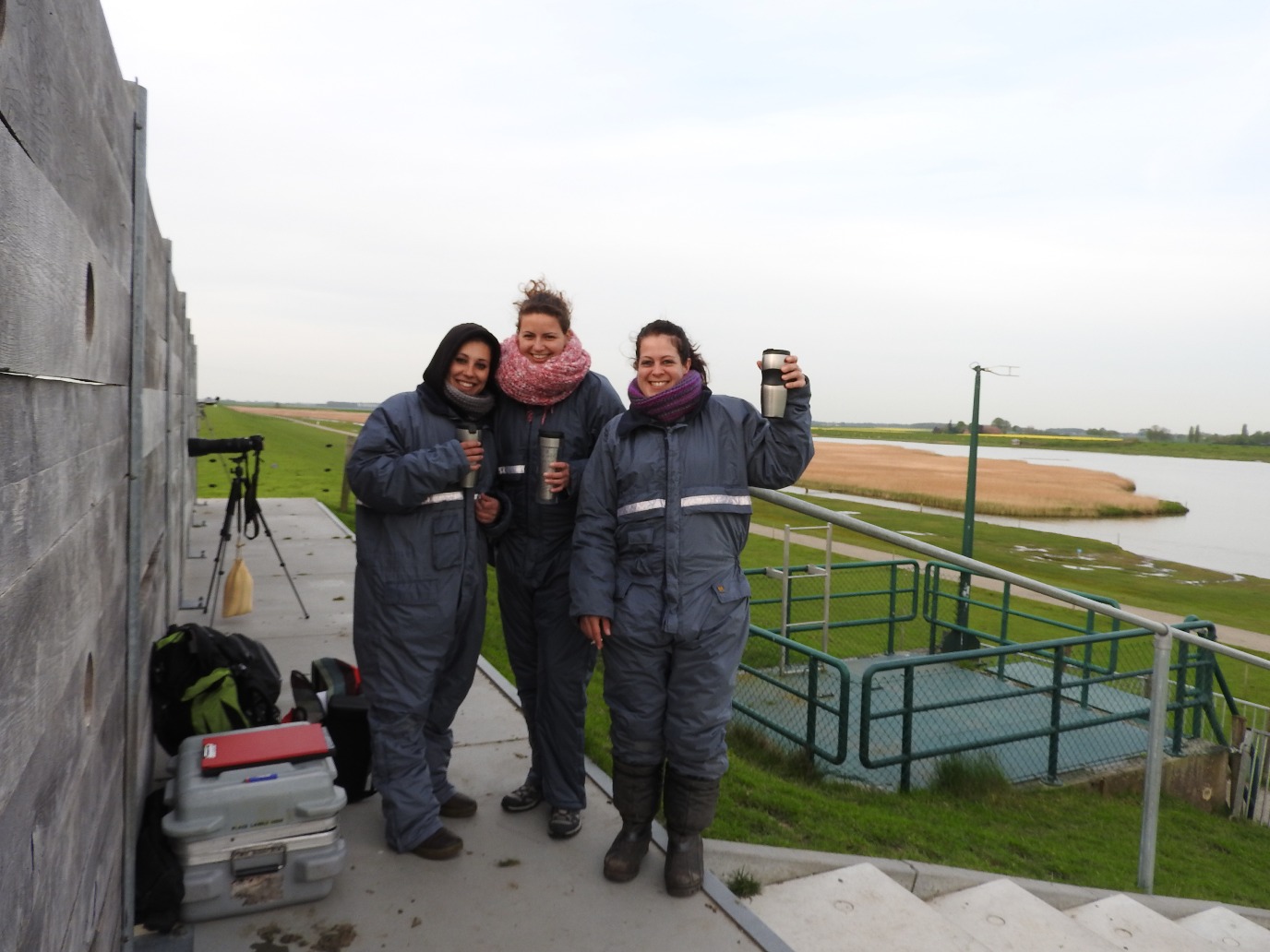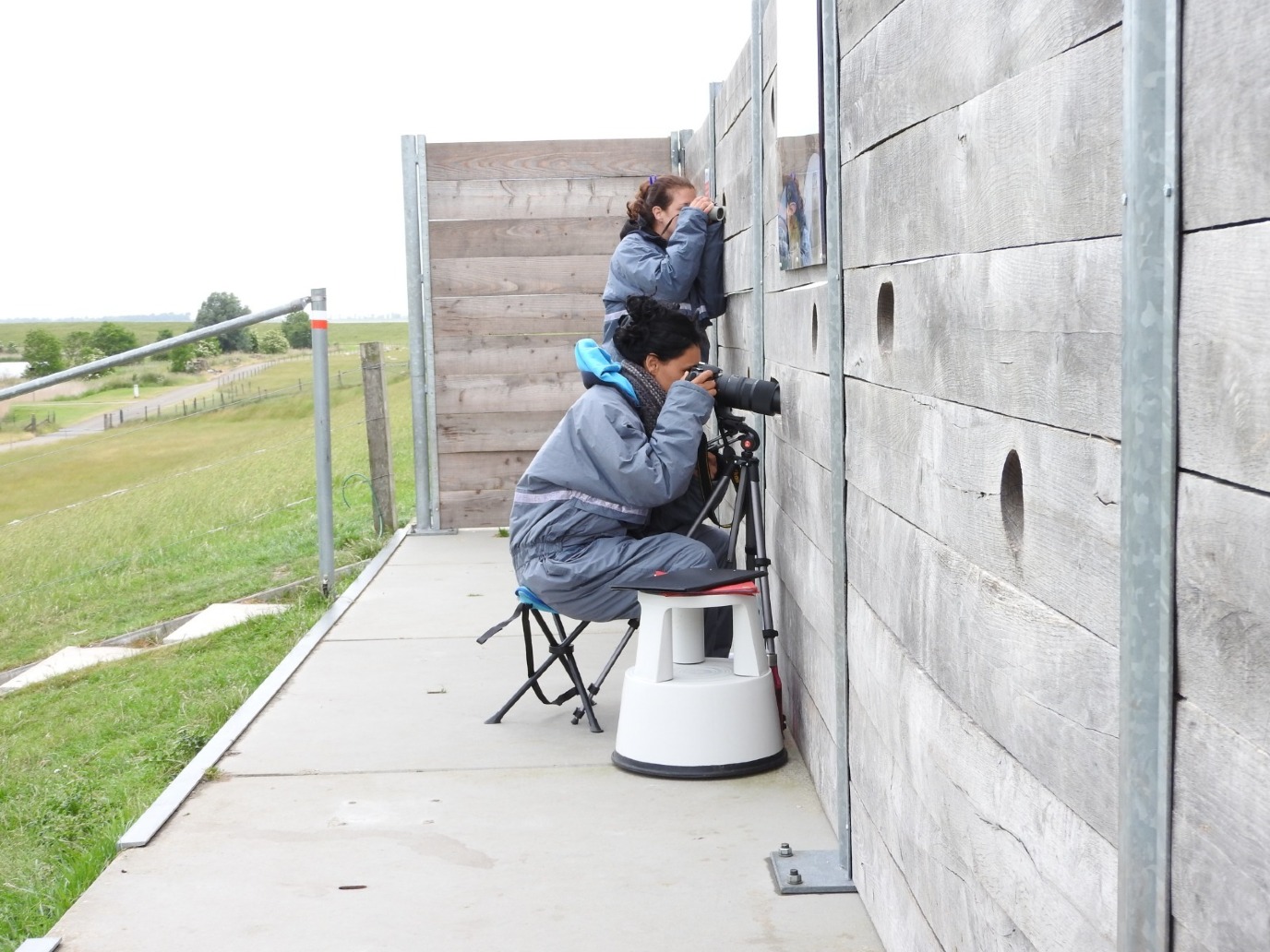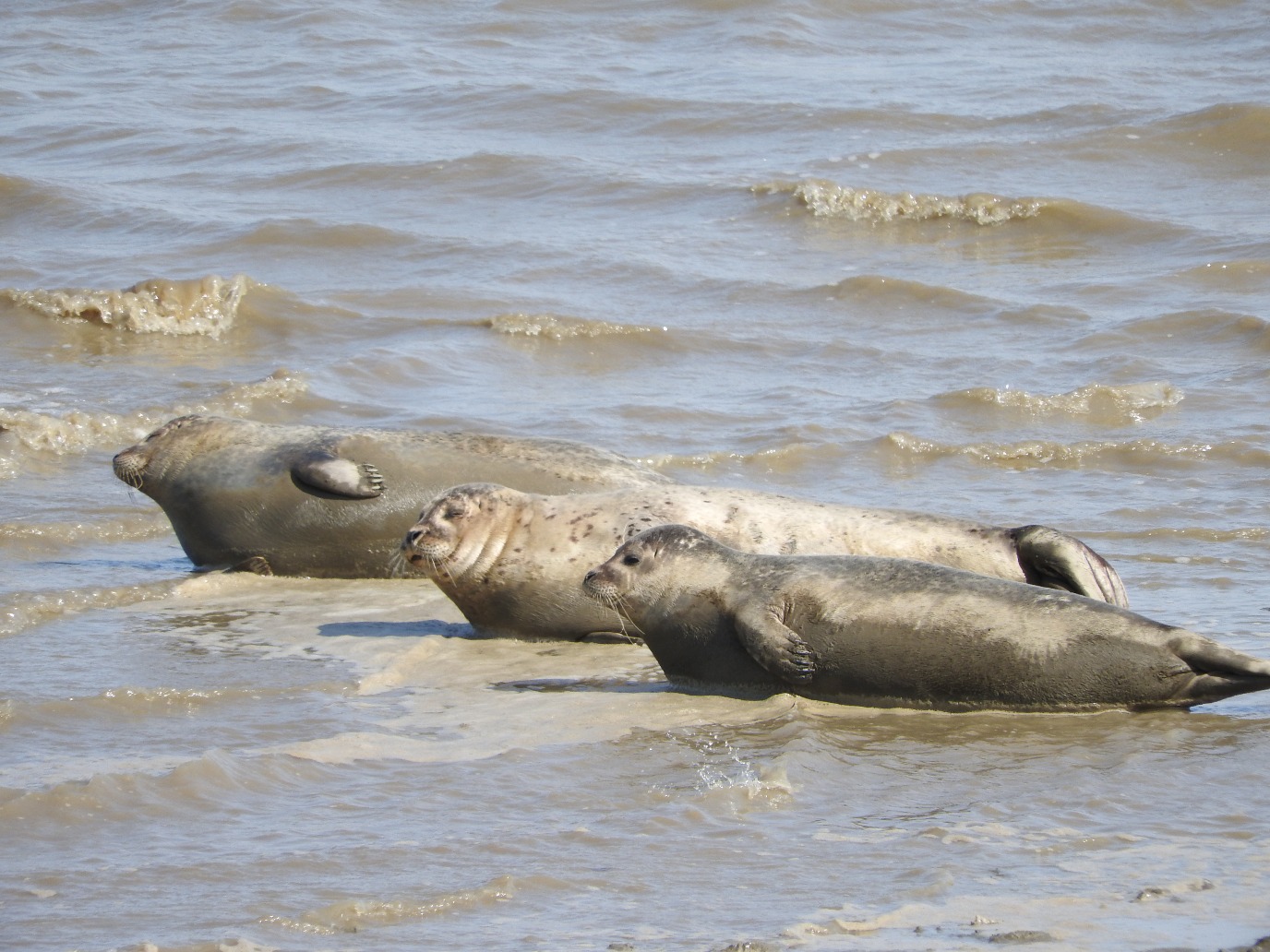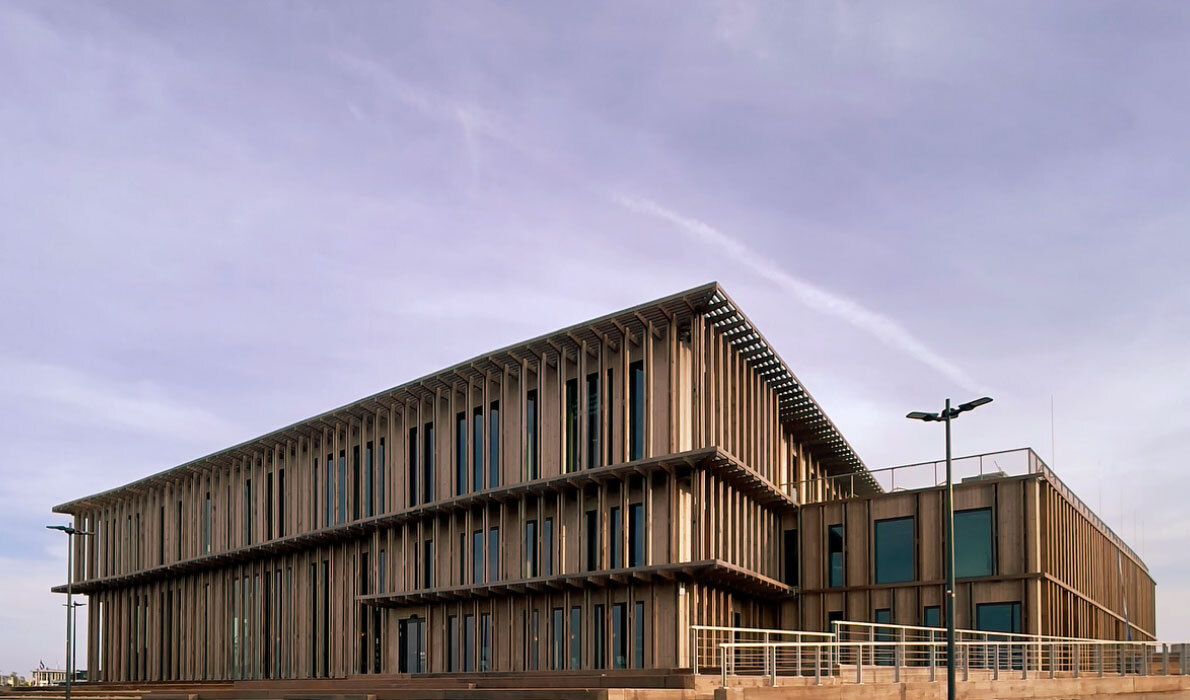‘Give seals space’
The Wadden Sea is constantly changing. Native animals need to be able to adapt in order to thrive in an environment that is shaped by the tides. However, the area is also subject to human interference. The new Wadden Sea World Heritage Centre, (Werelderfgoedcentrum Waddenzee, WEC) facilitates research and discussions on these various influences. By conducting research on seals in the area, PhD students Margarita Méndez-Aróstegui and Beatriz Rapado-Tamarit are able to shed new light on these topics. They view the seal as the symbol of a healthy Wadden Sea region.
Text: Britt Corporaal, UG

Around 2010, the former Pieterburen Seal Centre was already doing some research, mainly focussing on disturbances to the breeding colonies in the Dollard region and how these affected the seal population in the area. When marine biologists Margarita Méndez-Aróstegui and Beatriz Rapado-Tamarit arrived, they were told that common seal mothers always stayed with their pups. However, they discovered that the number of pups found unaccompanied in the Dollard area was incredibly high: ‘We began to wonder whether it was possible that so many pups were being abandoned. When the mother goes off to hunt, the chances of the pup being able to follow her and dive that deep are very small.’ Common seals are not big enough to survive for a long time without food. This means the pup has to be self-reliant from time to time. ‘So we decided: alright, let us see for ourselves.’ For their PhD research at the University of Groningen, Méndez-Aróstegui and Rapado-Tamarit decided to study the maternal strategies of the common seals and observe how the pups behave when they are not being cared for by other seals.

Observation and photo identification
When the first observations were carried out in 2014, Méndez-Aróstegui and Rapado-Tamarit came up with the idea of identifying the seals using photographs. This would take a lot of time, as there were many seals and many photographs would have to be taken of each animal. ‘It took a lot of work and many hours, but we wanted to give it a try. Then we realized that identification is much easier when the seals are wet, because their fur becomes darker and the pattern is then more visible.’ When the fieldwork started in 2015, the researchers therefore decided that they would start observing the seals four hours before high tide, so that they would be present the moment the seals came ashore.
The fieldwork is carried out by two people. One of them observes the animals on site: ‘We had to memorize and recognize the female seals. How are they doing? What type of behaviour can we expect from them? All of our data is collected through observation.’ The other person is responsible for taking photos of the seals. These photos are subsequently analysed in the lab, where the seals are identified based on their pelage patterns: ‘It is all about observing when the seals become pregnant, when they give birth, and identifying the mother of each pup. And also making videos when a pup looks like it's about to suckle or when the mother encourages that behaviour.’

Changes in seal-care
When asked about recent observations, Méndez-Aróstegui and Rapado-Tamarit emphasize how little information was previously available about the actual behaviour of seals. Some findings have influenced their research methods. For instance, the researchers discovered that seals’ appearance changes as they age: The pattern of their pelage remains the same, but as they get older, it gradually becomes lighter. A few years ago, we thought that some were just lighter and others darker.’ By focusing on the individual patterns of their pelage, they can be more easily identified and the researchers can collect more data on the relationships between the seals over time.
Other research findings have changed rescue practices: ‘Common seal pups are quite resourceful. They do not need their mothers all the time to survive the end of the lactation period. In the area we study, communal nursing is quite common. That is very interesting, because we do not know why.’ This new knowledge has changed the daily routine at the WEC. For example, previously, rescue workers would wait for two hours before getting involved, but now they wait for 24 hours. As a result, the interactions between humans and seals have drastically changed: ‘Just let the pups live as they would in the wild! This is a hospital; not the environment you want these pups to grow up in. You want them to grow up in their natural environment of the Dollard, playing with other pups, drinking milk from different mothers, and swim around.’

A new location
Now that the WEC is open, Méndez-Aróstegui and Rapado-Tamarit realized that the seals don’t actually need much help anymore. Working closer to the sea on a daily basis allows them to focus more on the ecosystem rather than only on the seals. As predators, seals depend on the health of their environment: ‘If we see the females are fat enough or if they are pregnant, that tells us a lot about the area. By observing how the seal population is doing during the breeding season, we can also assess the state of their environment to a certain extent.’
The location in the port of Lauwersoog offers new opportunities for collaboration. The new building offers more research facilities and space for the public. Although they are currently very busy, Méndez-Aróstegui and Rapado-Tamarit are open to new partnerships in the future: ‘I would say: the more the merrier. I would love to work with people who share our principles, are interested in the same topics, and share the same core values. Everything we can learn from the Wadden region as a whole is wonderful, because it allows us to link the behaviour of seals to other aspects.’
Now that the former Pieterburen Seal Centre has a new space, more treatments can be shown to the public: ‘In reality, we have been a hospital for many, many years. The WEC is all about helping these animals and their environment in whatever way, whether that is by studying them, helping them to recover, or even by euthanizing them. We want to show people that nature has its course and natural selection is part of it. You need to let that happen.’ The layout of the WEC has been influenced by this new attitude towards the seals: ‘We have changed the way we think about how to treat wild animals. Twenty years ago, everyone just walked around with a pup in their arms and showed it to everyone. Now, we make it clear: you don't pet the seals, you don't call them, you don't interact with them. You just give them space.’
We are the Wadden SeaThe WEC was established through a collaboration between the former Pieterburen Seal Centre, the province of Groningen, the port of Lauwersoog, Staatsbosbeheer [the Dutch Forestry Commission], and the Stichting Geïntegreerde Visserij [Integrated Fisheries Foundation]. In addition, the University of Groningen was in need of an accessible field station for marine biology. The input of biologists and other UG staff was crucial in making this happen. Ultimately, the WEC was built in Lauwersoog with support from the Wadden Fund. Renske de Jonge, head of Science LinX (UG) and guest curator at the WEC, adds: ‘The idea was to build a place close to the Wadden Sea where different parties could work together and a broad variety of voices could be heard.’ With our motto ‘We are the Wadden Sea’, diversity is the primary goal. The WEC wants to represent both humans and aquatic animals, thereby ensuring a sustainable future for the Wadden Sea region. De Jonge: ‘We hope that more people will become actively involved. There is already a community of Wadden enthusiasts, but we want to expand that group and strengthen the bonds between its members: fishers, conservationists, policymakers, researchers, seal lovers.’ In that sense, the WEC ties in with the concept of a fifth-generation university, where knowledge sharing and participating in society are the norm, and networking is at the forefront. |
More news
-
06 January 2026
Getting to grips with the workhorses of our body
